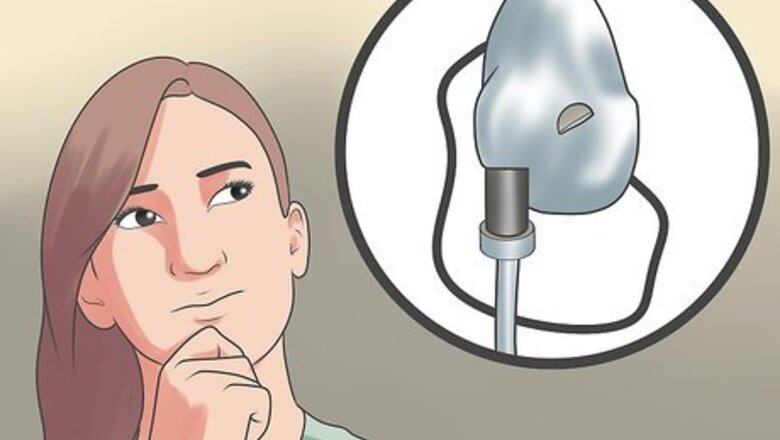
views
- Oxygen therapy is an effective and safe treatment for symptoms associated with COPD, asthma, lung disease, and others.
- Adding a humidifier to your oxygen system or the room can help prevent a dry nose and throat.
- Keep your oxygen system clean and in proper working order to avoid irritating your nose and throat.
- Saline spray is your best bet if you want to rehydrate your nose and throat quickly after an oxygen treatment.
Understanding Oxygen Therapy

Know when oxygen therapy is useful. Whenever your lungs are not taking in sufficient oxygen for your body, your doctor may prescribe oxygen therapy. Conditions that impair lung function and necessitate oxygen therapy include chronic obstructive pulmonary disease; COPD, (typically due to smoking), chronic asthma, interstitial lung disease, bronchiectasis, pulmonary hypertension, lung cancer, and heart failure. To determine whether you need oxygen therapy, your doctor may measure the partial pressure of oxygen in your blood (your PaO2). A PaO2 below 7.3kPa (55 mmHg) indicates that oxygen therapy is necessary. A PaO2 between 7.3 and 7.8 kPa (55 to 59 mmHg) and additional symptoms of inadequate oxygenation (leg swelling, increased red blood cells, pulmonary hypertension, or an altered mental state, for example) also indicates that oxygen therapy should be prescribed.
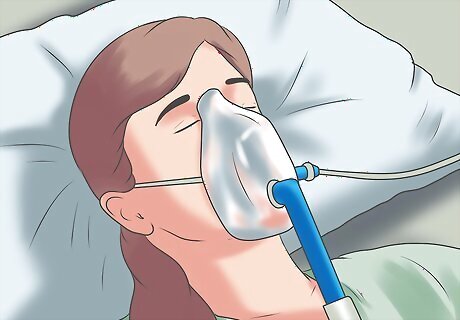
Understand how oxygen therapy is given. Depending on your circumstances, you may either receive oxygen therapy in a hospital setting or, if you have a chronic condition, at home. There are three basic methods of oxygen delivery: By face mask. In this kind of oxygen therapy, you wear a face mask that covers your nose and mouth, and oxygen is administered through it. By nasal cannula. In this kind of oxygen therapy, small tubes are placed in your nostrils, and the oxygen is administered through them. By a trans-tracheal tube. In this kind of oxygen therapy, an incision is made in your skin, and a tube is placed directly into your trachea to deliver oxygen.
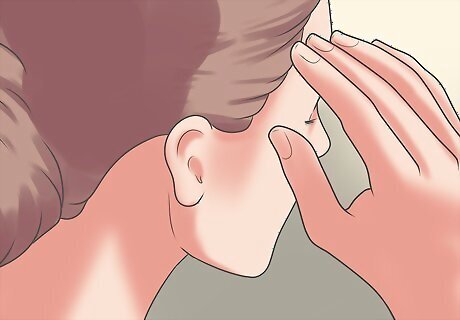
Consider the possible side effects. If you have oxygen therapy, you are likely to develop dryness in your nose, mouth, and throat. You may also experience nosebleeds, headaches, fatigue, infections, and skin irritation. Don’t let these side effects keep you from getting the oxygen therapy that you need. Many of them – including dryness in your nose and throat – are preventable.
Preventing Dry Nose and Throat
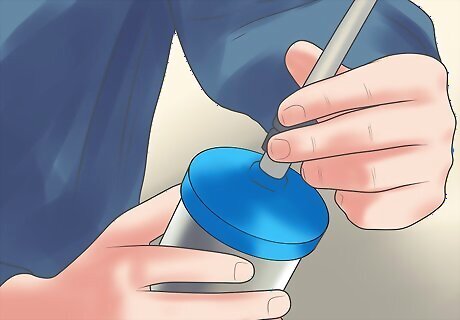
Use a built-in humidifier. The primary cause of a dry nose and throat is a lack of moisture. Using a humidifier may solve the problem. Humidifiers are available as attachments to your oxygen system; in fact, your system may come with one included. They moisten the oxygen, preventing dryness. Using the humidifier is most important if you are using a trans-tracheal tube. If you are using other methods, the humidifier won’t hurt, but you may not need it; you can use a nasal saline spray instead. Always use sterile or distilled water with your humidifier. Tap water can cause blockages or mineral sedimentation inside the tube. Change the water in the bottle every one or two days. Once a week, clean the entire humidifier (as well as the cannula, if applicable, and rubber tube) with distilled water and soap. Doing so will prevent microorganisms from building up and infecting your respiratory tract.

Add humidity to the room. In addition to the built-in humidifier, you can try using a room humidifier to add moisture to your environment. Room humidifiers are especially useful at night, when people tend to breathe through their mouths. Clean your room humidifier regularly – at least once a week – to prevent the build up of microorganisms. If you don’t have access to a room humidifier, you can use a kettle. Fill it with water, and heat it on the stove until it boils; water vapor will come out of the nozzle, humidifying the air. Repeat as often as necessary.

Keep your equipment in good condition. Tubes and nasal cannula need to be kept in good condition to minimize side effects. In addition to the regular cleaning, you should use a mild detergent and water to periodically clean these items. You should also replace tubes and cannula every six months.
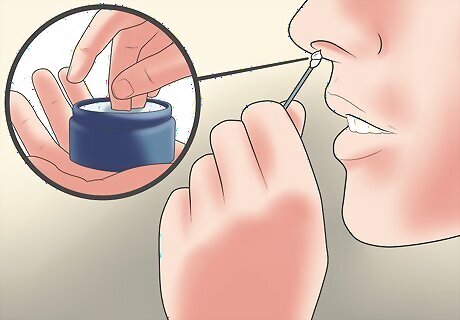
Try lubricating jelly. Jellies and other similar products can provide instant relief for a dry, irritated nose, soothing and moisturizing the nasal mucosa. Aloe Vera gels work well, as do many water-soluble products. Your doctor or oxygen cylinder provider may have a specific recommendation about the best jelly, lotion, or balm to use. Whichever you decide on, apply a thin layer to your upper lip and inside your nostrils, using a clean cotton swab. Repeat two or three times a day. Be careful not to apply too much and not to get any in the cannula, if that’s the method of oxygen delivery you are using. You don’t want to interrupt oxygen flow, as this will reduce the effectiveness of your treatment. Do not use petroleum-based products, such as petroleum jelly. These products are a fire hazard when used with oxygen tanks.

Apply sesame seed oil. Sesame seed oil has anti-inflammatory, antioxidant, and anti-viral properties, and it can soothe your mucous membranes. Apply a thin coating of the oil inside your nostrils and above your upper lip, using a clean cotton swab. Repeat two or three times a day. Sesame seed oil is found at most natural food stores.

Spray saline into your nose and throat. Saline spray, which is available at most pharmacies, contains a 0.9% sodium chloride solution, which is equal to that of your body fluids and secretions. The spray will rehydrate the mucous surface of your nose and throat. Spray one puff into each nostril every one or two areas (or as needed – the spray is safe to use as often as you want). Wipe the nozzle with sterile gauze or tissue after each use. If the salty taste doesn’t bother you, you can also spray saline into the back of your throat.

Talk to your doctor about medications. If nothing seems to be working adequately to prevent a dry nose and throat, talk to your physician. He or she may recommend a nasal decongestant (such as Oxymetazoline or Xylometazoline), which can be used every four to six hours. Your doctor may also prescribe an antihistamine or steroid medication to deal with itching and irritation in your nose and throat. The particular drug and dose will depend on your specific circumstances.

















Comments
0 comment